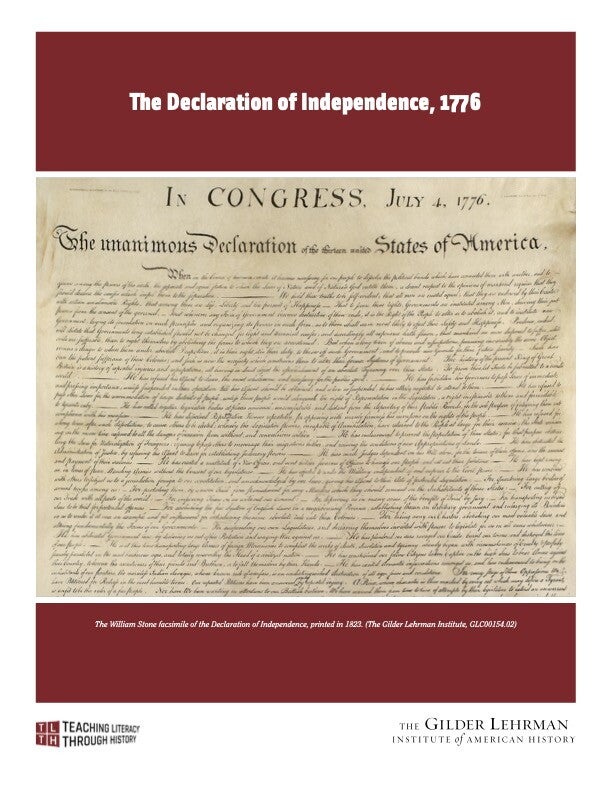Lesson by Tim Bailey
Grade Level: 7–12
Number of Class Periods: 5
Primary Era: The American Revolution, 1763-1783

Over the course of five lessons the students will be asked to “read like a detective” to discover the meaning and significance of what is explicitly stated in the Declaration of Independence (primarily written by Thomas Jefferson) and draw logical inferences and conclusions from its text. They will demonstrate these skills by writing succinct summaries of selections from the text, restating these summaries in their own words, and ultimately writing a short persuasive essay in response to a thought-provoking prompt based on the document.
Lesson Plan Author: Tim Bailey
CCSS.ELA-LITERACY.RH.6-8.1: Cite specific textual evidence to support analysis of primary and secondary sources.
CCSS.ELA-LITERACY.RH.9-10.2: Determine the central ideas or information of a primary or secondary source; provide an accurate summary of how key events or ideas develop over the course of the text.
CCSS.ELA-LITERACY.RH.9-10.4: Determine the meaning of words and phrases as they are used in a text, including vocabulary describing political, social, or economic aspects of history/social studies.
CCSS.ELA-LITERACY.RH.11-12.5: Analyze in detail how a complex primary source is structured, including how key sentences, paragraphs, and larger portions of the text contribute to the whole.
CCSS.ELA-LITERACY.WHST.11-12.1.a: Write arguments focused on discipline-specific content; Introduce precise, knowledgeable claim(s), establish the significance of the claim(s), and create an organization that logically sequences the claim(s), reasons, and evidence.
What did the Declaration of Independence suggest are the benefits of having a government?
According to the Declaration, why was British governance of the colonies a failure?
How did the Declaration’s authors define “independence”?
Declaration of Independence, 1776